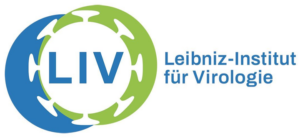- Herpesvirus latency establishment
- Kaposi sarcoma-associated herpesvirus
- Varicella zoster virus
- Comparative epigenetics
- Viral chromatin regulation by polycomb repressor complexes and PML nuclear bodies

The tumorigenic Kaposi Sarcoma-Associated Herpesvirus (KSHV) establishes latency in proliferation-competent cells. We have previously shown that rapid deposition of facultative heterochromatin marks by Polycomb-repressive complexes 1 and 2 (PRC1 and -2, respectively) is a major epigenetic hallmark of KSHV latency establishment. In the first funding period of DEEP-DV, we investigated PRC recruitment mechanisms and the functional impact of PRC-mediated repression of viral chromatin during latency establishment and maintenance. We have discovered an unexpected role of PRCs in promoting the maintenance of newly established latent viral episomes in dividing cells. In addition, we found that acquisition of PRCs and/or associated histone marks protect latent chromatin from deposition of the constitutive heterochromatin mark H3K9me3 by the Human Silencing Hub (HUSH) complex. In the second funding period, we will elucidate molecular causes and functional consequences of above phenotypes. We suspect that hyperacetylation of viral chromatin results in deregulated, uncoordinated and/or pervasive transcription that plays an important role in decreased episomal stability and accelerated HUSH recruitment. We furthermore propose that these mechanisms are also responsible for previously observed and hitherto unexplained phenotypes in de novo infected and primary effusion lymphoma (PEL)-derived cell lines. In collaboration with other DEEP-DV partners, we will therefore perform a detailed time-resolved quantitative and qualitative analysis of the early latent transcriptome in the presence and absence of chromatin silencing complexes. These analyses will be combined with super resolution microscopy, single-episome live-cell tracking, and investigation of altered chromatin states to uncover functional defects of unstable viral genomes. We expect that this project will significantly advance our understanding of epigenetic chromatin control in gammaherpesvirus latency and additionally may provide concepts for novel latency intervention strategies. Finally, given the role of PRCs in the lifecycle of several other herpesvirus, we expect that the importance of our findings will significantly extend beyond KSHV.



